
From PS1 Website
Whilst in NYC I visited PS1 Centre, in Queens and had the chance to see this installation by Feng Mengbo, Long March: Restart (2008)
PS1 Website Says, "Lifting imagery from classic games like Street Fighter II and Super Mario Bros., along with propaganda motifs from Communist China, Mengbo invites visitors to direct the hero-a Red Army soldier-via a wireless controller and combat the various enemies in his digital path."
Its a kind of strange mix of imagery and I am not entirely sure I know what the artist is trying to convey, as the red army protagonist hurls cans of coke as ammunition at his capitalist american enemies - which include soldiers and, as a finale, some sort of giant floating cyber-alien-octopi thing.
The landscapes he travels in vary from American to Chinese. The strangest thing was when watching the game played through by someone who had practiced, after vanquishing the last monster, the character seemed to be left in the last level, without any kind of final congratulatory message, without seemingly any portal to walk through, but over seen by a large pixellated portrait of Chairman Mao. One then simply is left to reload and start the game again.
I wonder if it was something that had not been completed properly at a lower level, as the gamer went through exploding everything in his path. I didn't think my game pad skills honed enough to be able to attempt getting further (I had tried a Nintendo Entertainment System - like how I refer to the full name?! - in the summer and not got past the first level of mario before I had sore patches on my thumbs).
However, I sort of regret not having a go.
If I were to interpret the narrative of the game it seems that one can only successfully combat capital within capital itself, and that Chairman Mao's red army is a symptom of this as much as the coke cans. Both exist within the realm of capitalism. It is hard to know though, as a viewer, if the artist included any 'cheats' or if there was in fact a secret way of transforming capital once and for all, or if the artist was really trying to say this was a game that one couldn't complete, or that it could be as frustrating as banging one's head against a brick wall. In any event these are all sorts of attitudes that do exist, and perhaps the game was simply drawing attention to them in some way.
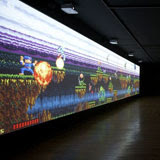
The other good thing about this was the form of the installation. On one long wall you played the video game - you followed the character on the screen along the scrolling landscape much in the same way as mario or street fighter. On the opposite wall, a kind of close up window was projected, which had been programmed to follow the character in the screen, but englarging the pixels, so that rather than entering the game landscape in the same way, the viewer was brought to examine the way the landscape and the characters had been composed by blocks of color, and see the whole wall as a moving, semi-abstract projection of enlarged pixels. As a player in the game, you had to switch which wall you looked at to play after each level, as the full landscape and the close up landscape would swap sides. It may have just about been possible to play looking at the close up, as the figure was still recognisable, however, the landscape was vastly easier for gaming purposes as one could anticipate what the next obstacle was going to be in advance of the character meeting it. There must have been a separate program developed to do this close up, and to control the projectors. (on the ceiling, for each long wall there were about four projectors linked up to transmit each image).
(This perhaps added another layer of dialectics to the piece as one kept having to turn around to view the next part of the story? Hmm. something like that. need to think about it some more)










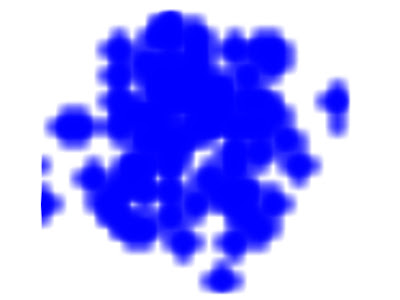











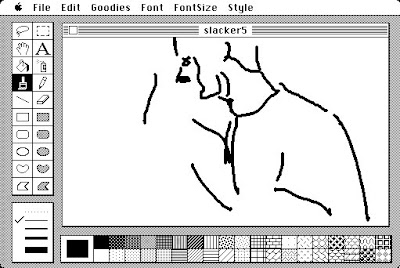




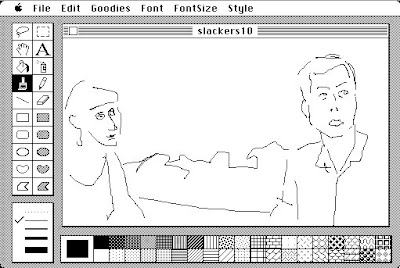


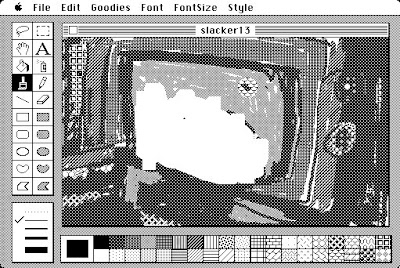

 Issue 5
Issue 5